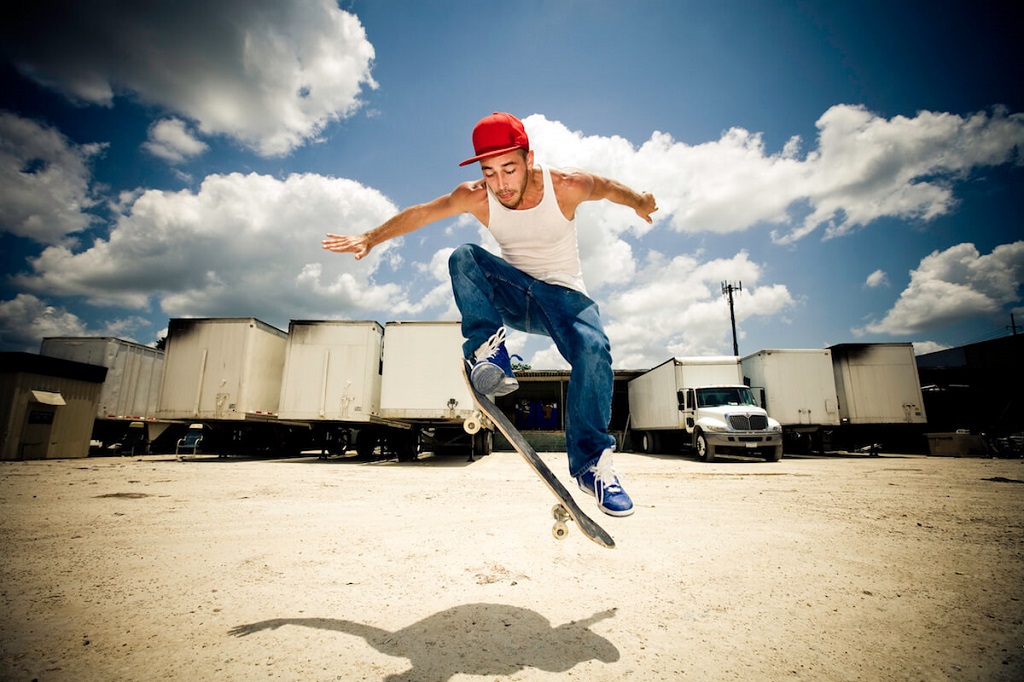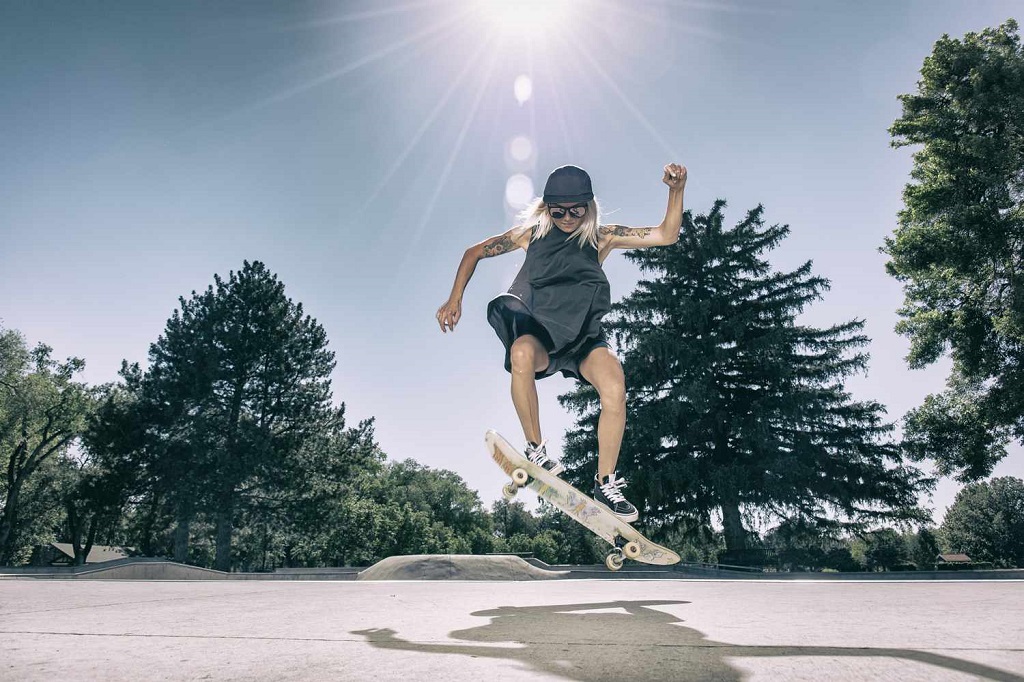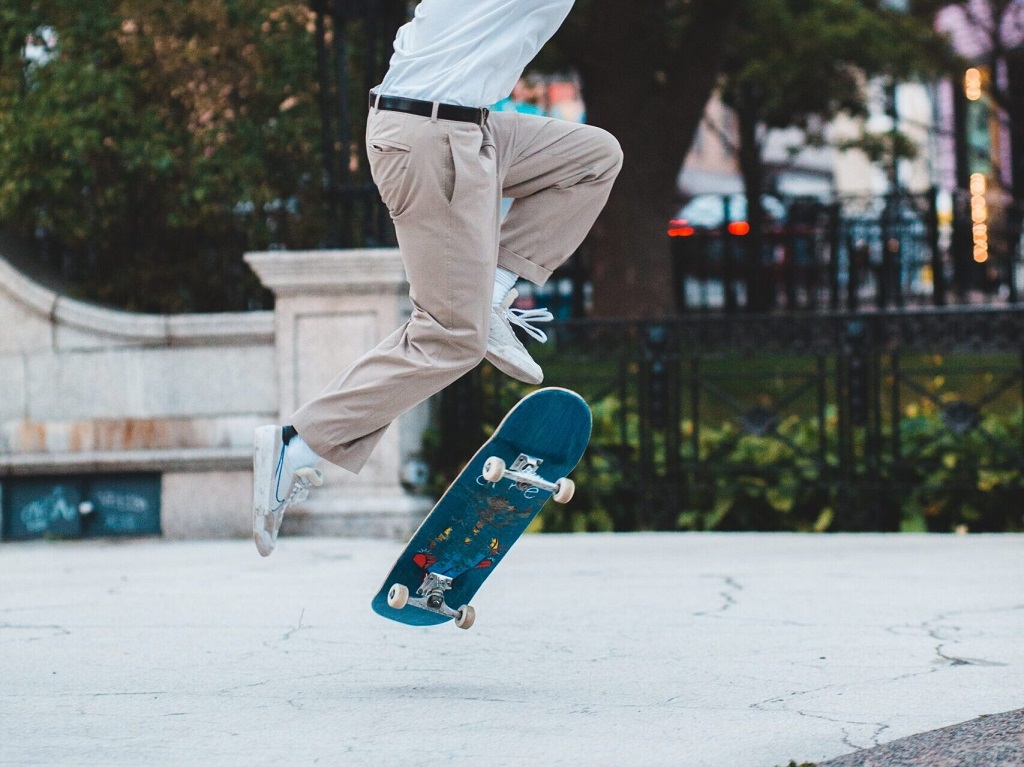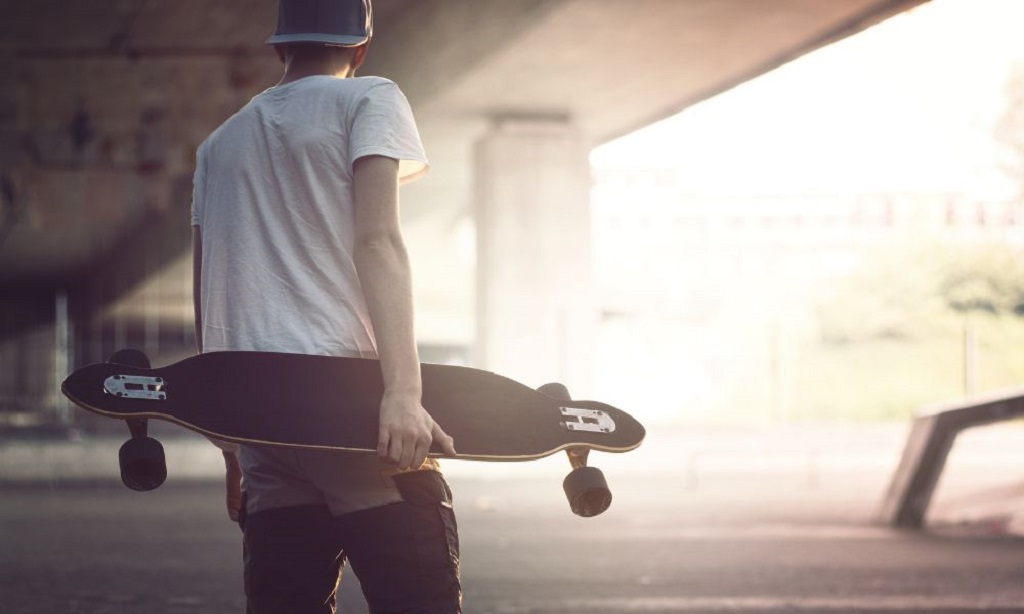
Hey there, skateboarding enthusiasts and curious minds! Ever wondered how a skateboard magically defies gravity and seems to jump up into the air at the command of its rider? Well, you’re in for a treat, because in this exciting journey through skateboarding science, we’re going to unveil the secrets of how a skateboard takes flight.
Picture this: you’re at your local skate park, ready to unleash your inner Tony Hawk or Leticia Bufoni, and you’re about to pull off an impressive ollie or pop shuvit. As you crouch down and prepare to make your board soar, have you ever stopped to wonder how it all works? What’s happening beneath those grippy wheels and sturdy deck that allows you to defy gravity and catch some air?
In this in-depth exploration, we’ll break down the physics, mechanics, and techniques behind two fundamental skateboard tricks: the ollie and the pop shuvit. So grab your deck and let’s roll into the world of skateboard science!
Understanding the Basics: Skateboard Anatomy
Before we dive into the nitty-gritty of how skateboards jump, let’s get familiar with the key components of a skateboard. Knowing what makes up your trusty four-wheeled companion is crucial to understanding how it can take flight.
- Deck: The deck is the flat, usually wooden, board where you stand. It’s the canvas for all your skateboarding moves, and it’s where the magic happens.
- Trucks: These metal components are mounted underneath the deck and hold the wheels. Trucks allow you to steer and turn your skateboard.
- Wheels: The four wheels are attached to the trucks. They provide the ride and the roll, which is essential for any skateboarding trick.
- Griptape: The gritty, sandpaper-like surface on top of the deck provides the traction you need to stay on the board. It’s the part that your shoes grip onto.
- Bearings: These small, round devices fit inside the wheels, ensuring they spin smoothly. Bearings play a role in how your skateboard glides.
Now that we’re on the same page about skateboard anatomy, let’s get down to the big question: How does a skateboard jump up into the air? Well, it’s time to unlock the secrets. Discover how much does a skateboard deck weigh.
The Ollie: Defying Gravity Like a Pro
The ollie is the bread and butter of skateboarding tricks. It’s the foundation for countless other moves, and understanding how it works is like peeking behind the curtain of skateboarding wizardry.
Step 1: The Setup
Imagine you’re rolling along on your skateboard. To initiate an ollie, you need to set up your feet in a specific way. Your back foot, which is your power foot, should be on the tail of the skateboard, while your front foot, your guiding foot, is closer to the center, angled slightly diagonally.
Step 2: The Pop
Here’s where the magic begins. With your feet properly positioned, you crouch down and use your back foot to smack the tail of the skateboard against the ground. This action, called the “pop,” generates a burst of kinetic energy, pushing the board downward.
The pop is a bit like a rocket’s engine firing, but in reverse. Instead of propelling the board upward directly, it momentarily pushes it down, setting the stage for the next crucial step.
Step 3: The Slide
After the pop, your front foot plays a crucial role. You’ll need to drag the edge of your shoe’s sole up towards the nose of the board. This is where the griptape on the deck comes into play – it grips your shoe and helps pull the skateboard along.
As you slide your front foot forward, you’re leveling out the board and preparing it for liftoff.
Step 4: The Lift-Off
Now, here’s the moment of truth. As your front foot reaches the nose of the skateboard, you’ll simultaneously lift your back foot, allowing the tail of the board to follow your front foot’s trajectory. The skateboard starts to rise into the air, seemingly defying gravity.
It’s important to note that the ollie isn’t about physically jumping off the ground. Instead, it’s all about manipulating the board beneath your feet, turning potential energy into kinetic energy, and using physics to make it appear as though your skateboard is leaping into the air. Think of it as a coordinated dance between you and your board.
Step 5: The Catch and Land
As your skateboard reaches its peak height, it’s time to prepare for the landing. To do this, you’ll need to level out the board by extending your legs and bringing your front foot back down to meet the griptape.
Once the board is level, it’s time to make contact with the ground again. Bend your knees slightly to absorb the impact and ensure a smooth landing. Voilà! You’ve successfully executed an ollie.
The Pop Shuvit: Spinning with Style
Now that we’ve unraveled the mysteries of the ollie, let’s turn our attention to another classic skateboard trick – the pop shuvit. This move involves the skateboard spinning 180 degrees while in mid-air, and it’s a favorite among skaters for its style and flair.
Step 1: The Setup
Start with the same setup as the ollie. Your back foot is on the tail, and your front foot is angled diagonally near the center of the deck.
Step 2: The Pop
Just like in the ollie, you’ll use your back foot to give the tail a sharp pop against the ground. This time, however, you’re not looking to jump with the board. Instead, you’re focused on making it spin.
Step 3: The Flick
As the tail of the skateboard pops, your front foot comes into play. Instead of sliding it forward, you’ll use the edge of your front foot to flick the skateboard’s nose in the direction you want it to spin.
Think of it like flicking a coin with your thumb, but in this case, you’re giving your skateboard the spin it needs to perform a 180-degree rotation.
Step 4: The Catch
As the board spins in mid-air, you’ll need to track its movement and prepare for the landing. Keep your eyes on the griptape and be ready to catch it with your feet.
Step 5: The Land
Once the skateboard has completed its 180-degree spin, it’s time to bring it back to the ground. As with the ollie, you’ll extend your legs to level out the board and ensure a smooth landing.
Bend your knees slightly upon touchdown to absorb the impact, and you’ve just nailed a pop shuvit! It’s all about finesse and timing, much like a gymnast sticking a perfect landing.
The Science Behind It All
Now that we’ve walked through the ollie and the pop shuvit step by step, let’s dive into the science that makes these tricks possible. At the heart of skateboarding physics are three fundamental principles: Newton’s laws of motion, conservation of energy, and friction.
- Newton’s Laws of Motion: Sir Isaac Newton’s laws are the foundation of physics and apply to every skateboard trick. The first law states that an object at rest tends to stay at rest, and an object in motion tends to stay in motion unless acted upon by an external force. When you pop the tail of your skateboard, you’re applying a force that overcomes the board’s inertia and sends it into motion.
The second law relates force, mass, and acceleration. When you push down on the tail, you create an upward force on the board, and because the skateboard has mass (inertia), it accelerates upward. This is the “pop” we talked about earlier.
Finally, the third law states that for every action, there’s an equal and opposite reaction. When you push the tail down (action), the board pushes you upward (reaction), allowing you to catch air. - Conservation of Energy: Skateboarding is all about converting potential energy into kinetic energy and back again. When you crouch down and pop the tail, you’re storing potential energy in the compressed form of your legs and the flexed deck. As you release this energy, it transforms into kinetic energy, propelling the board into the air. When you land, the kinetic energy is absorbed by the board and your legs, and it’s converted back into potential energy for the next trick.
- Friction: Remember that griptape we talked about? It’s your best friend when it comes to skateboard tricks. Friction between your shoes and the griptape provides the necessary traction for your feet to manipulate the board. Without it, you’d have a hard time popping, sliding, or flicking the skateboard effectively.
In conclusion
The secrets behind how a skateboard jumps up into the air are all about physics, energy, and a bit of finesse. Whether you’re mastering the art of the ollie or spinning with style in a pop shuvit, understanding the science behind these tricks can help you become a better skateboarder.
So go out there, grab your board, and keep pushing the boundaries of what’s possible on four wheels. Skateboarding is not just a sport; it’s a creative expression of movement and a lifelong journey of learning and mastering tricks. Now, let’s shred and soar!
FAQs
- Is skateboarding hard to learn?
Skateboarding can be challenging at first, but with practice and dedication, anyone can learn to ride and perform tricks. Start with the basics and progress at your own pace. Remember, even the most skilled skateboarders were once beginners! - What type of skateboard is best for beginners?
For beginners, a standard street skateboard with medium-sized wheels and a stable deck is a good choice. It’s versatile and allows you to learn the fundamentals of skateboarding before diving into specific styles like longboarding or cruising. - How can I improve my balance on a skateboard?
Balance is key in skateboarding. Practice standing on your board and getting comfortable with your stance. Start with stationary tricks and gradually move to more advanced maneuvers. Balance boards and exercises can also help improve your stability. - What safety gear should I wear when skateboarding?
Safety should always come first. Wear a certified helmet, knee pads, elbow pads, and wrist guards to protect yourself from injuries. Many skaters also wear gloves and slide gloves for added safety during tricks. - Can I skateboard at any age?
Absolutely! Skateboarding is a sport for all ages. You’ll find skateboarders of various ages, from young kids to adults. Just make sure to take it at your own pace and prioritize safety, especially as you get older.
